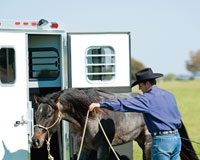When a horse hates being groomed, it can make life difficult.
“Everyone would just sort of barely dust her off,” she says.
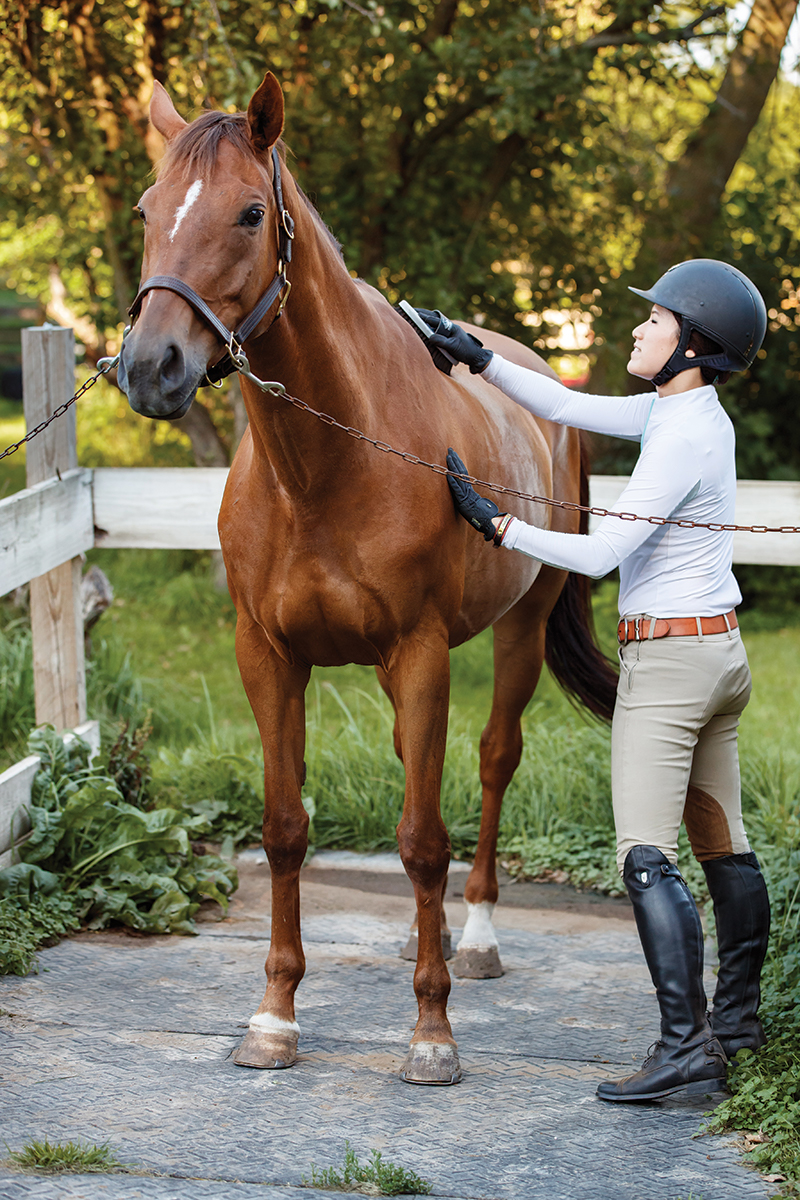
But thanks to some time and effort to address the situation, and finding the right tools, the mare has come around to tolerating it. And while grooming may never be on her list of favorite activities, any of the school kids can brush her now as long as they use her special grooming kit, shares Hill.
So if your horse hates being groomed, there’s hope. We’ll look at some reasons horses object to grooming and what you can do to help with the expertise of Hill and veterinarian Jenny Biehunko, DVM, of Veterinary Behavior Consultants of Alabama in Pelham, Ala., who is a resident ACVB specializing in behavioral medicine.
Physical Causes
While horses all have innate levels of sensitivity and individual preference in how they like to be handled and groomed, pain is the first thing to explore.
“If you have a horse that’s reactive to grooming, you certainly want to make sure there’s not a medical reason for that,” says Biehunko. “Especially if you have a horse that previously didn’t have a problem with a certain procedure and suddenly does, that’s a big red flag to me that we may have some medical issues going on.”
Hill agrees that when horses hate being groomed, they are often trying to tell you they have an underlying pain issue somewhere in their body.
“Back pain, ulcer pain, and tooth pain all can cause a horse to be quite reactive and quite sore,” says Hill. “Vitamin E deficiency or Lyme disease can also make a horse very muscle sore, which can make grooming very uncomfortable.”
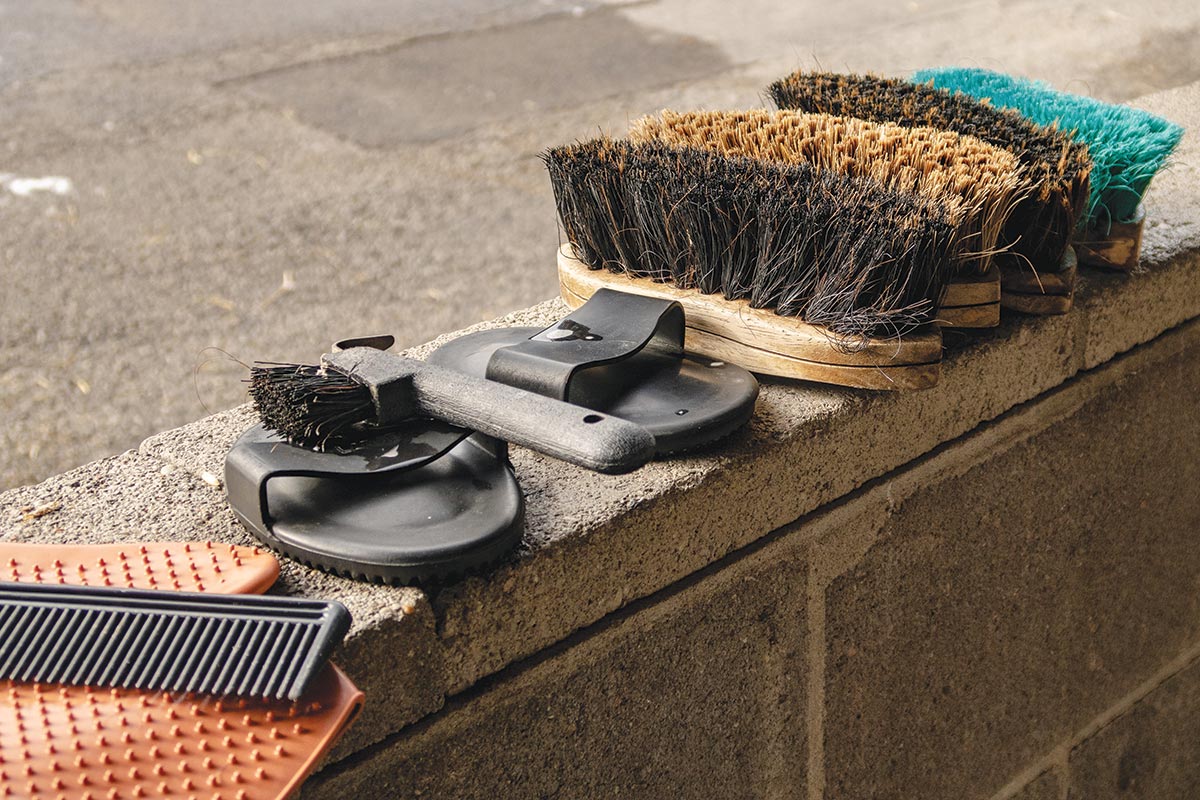
Try to notice if the pain is specific to one area, which might indicate an injury, or seems to be a whole-body issue.
According to Biehunko, there are a plethora of medical issues to consider.
Selenium/magnesium imbalances can cause horses to be painful. Other culprits may include neurologic issues, such as equine protozoal myeloencephalitis (EPM).
Skin issues are a big one, such as rain rot, fungal and bacterial infections, and parasites (such as lice). With mares, Biehunko notes that reproductive tract issues can often affect the back muscles, resulting in discomfort and pain with saddling, riding and grooming.
Tools & Techniques
Some horses hate being groomed because of the way you’re grooming or the tools you’re using. Try not to take it personally! Instead, listen to the animal, and be willing to adapt and find a way that works.
“I have about 25 different currycombs in my kit, and I have lots of different brushes,” says Hill. “Sometimes it’s just finding the tools that a specific horse likes.”
Hands-On Grooming Gloves are among her favorites, as well as cactus cloth, a coarse cloth woven from cactus fibers.
“I happen to love using a cactus cloth as a currycomb on a really sensitive horse—you can get a nice, deep curry,” she says. In the case of the school horse that Hill knew that couldn’t be brushed, the cactus cloth proved to be the key to making her happy.
Another tool Hill likes to try with sensitive horses is the long-bristled “sweep” or “flick” brushes, as she finds that the long bristles help spread out the impact.
Subtle SignsIt’s a good idea to become familiar with the more subtle signs your horse may be giving you that he is uncomfortable in order to head off a big emotional response or explosive physical reaction during grooming. When you start to see those signs of discomfort, you can stop or change what you are doing. While many people like to chat with friends or listen to music while grooming, professional equine groom Cat Hill points out that if you’re not paying attention, you may miss the more subtle signs of discomfort. Signs of discomfort may include:
Signs that a horse is enjoying your grooming session may include:
|
Finding out how your horse prefers to be touched can also be extremely helpful.
“Sometimes we’re too rough, but I also think that with horses, sometimes we’re not firm enough with our brushing, and it tickles,” says Biehunko. “Sometimes harder is the answer, and sometimes it’s not. Ask the animal. The animal will tell you whether something is comfortable or uncomfortable.”
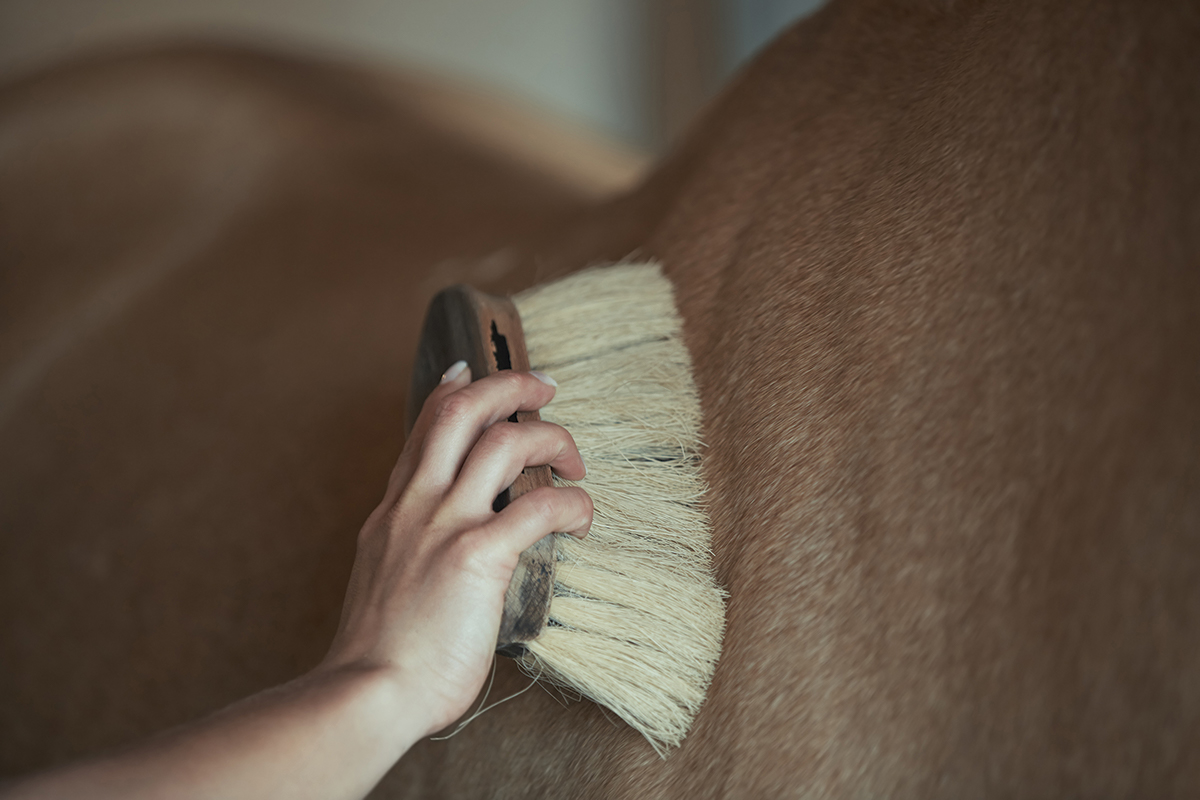
Here are a few techniques that Hill recommends for these sensitive-skinned equine souls.
Reverse Curry: While we are often taught to start grooming at the front of the horse and move rearward, Hill says that many horses find that to be an invasion of personal space. Instead, she suggests reversing the process.
“A lot of times, sensitive horses don’t mind their hindquarters being brushed—in fact, they often like it,” she reveals. Starting your curry session on the hindquarters where there’s a large muscle mass that may be a less reactive area for the horse and can make them feel a little more comfortable as you start the grooming process.
Different Strokes: A common mistake Hill sees that makes a horse hate grooming is pushing the brush too hard into the horse in an attempt to be vigorous.
“Some horses really don’t like that ‘thump’ when you put your hand down quickly,” she says. “It can be startling and cause the muscles to tense and be painful.”
Instead, she says, the “sweep” motion of the brush is what needs to be vigorous.
A Location Situation
In addition to how you’re grooming, where the grooming sessions take place can be part of why your horse hates grooming. With a horse that tap dances in the cross-ties during grooming, you need to figure out whether it’s the cross-ties, the environment, or the grooming process itself that’s causing difficulty. Grooming your horse in a different location is a simple step to try to make things better.
“Horses are incredibly good associative learners, and maybe something happened in that particular area in the past that they associate with something bad, so try a different environment,” says Biehunko.
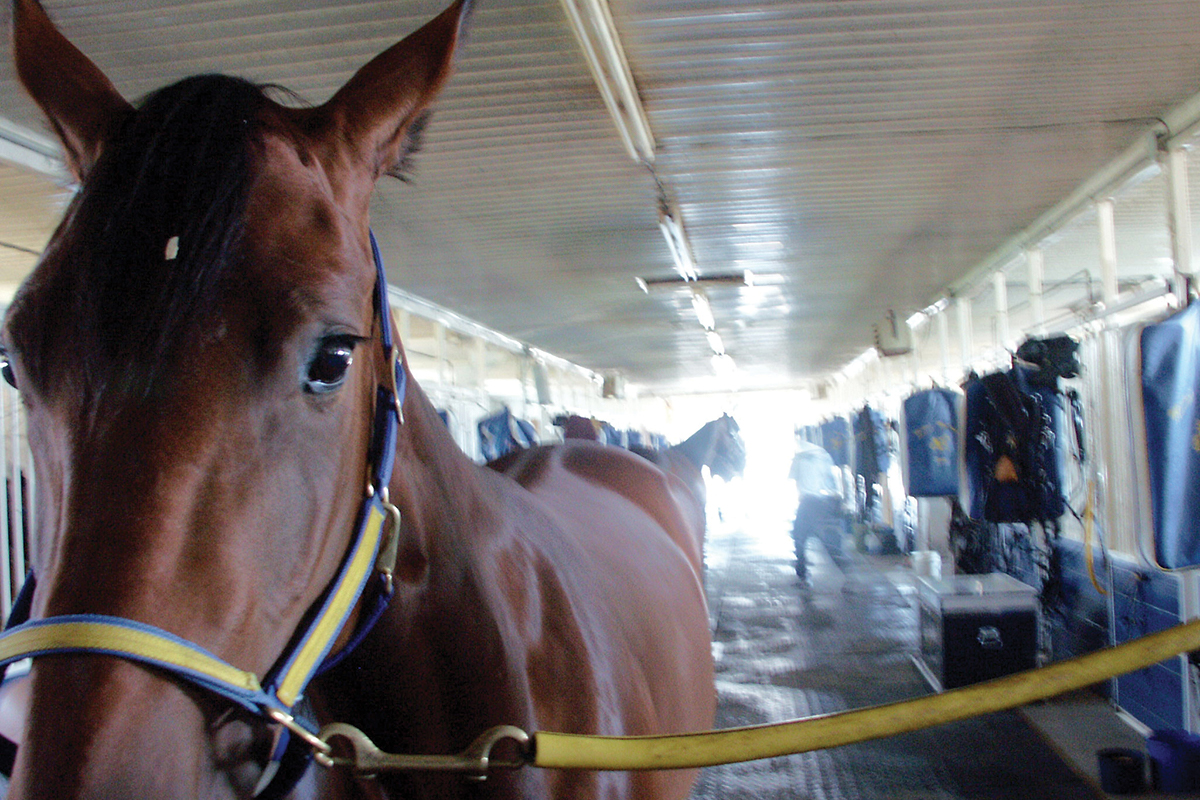
Equine bullies nearby can be another source of angst when a horse is in a confined position for grooming. Sometimes the cross-ties themselves can put a horse in a physical position where he has trouble standing or balancing—especially for a young horse, a neurologic horse, or a horse that is simply not familiar with cross-ties.
Finding the Sweet Spot
What you’re ideally looking for when you groom your horse is a relationship-building process, as well as a get-your-horse-clean process, says Hill, noting that grooming between two horses is a fairly intimate relationship—it’s not something that’s done between two strange horses.
With that in mind, almost every horse has a spot where they enjoy being groomed or scratched. Hill suggests using your currycomb to find it and build positive associations.
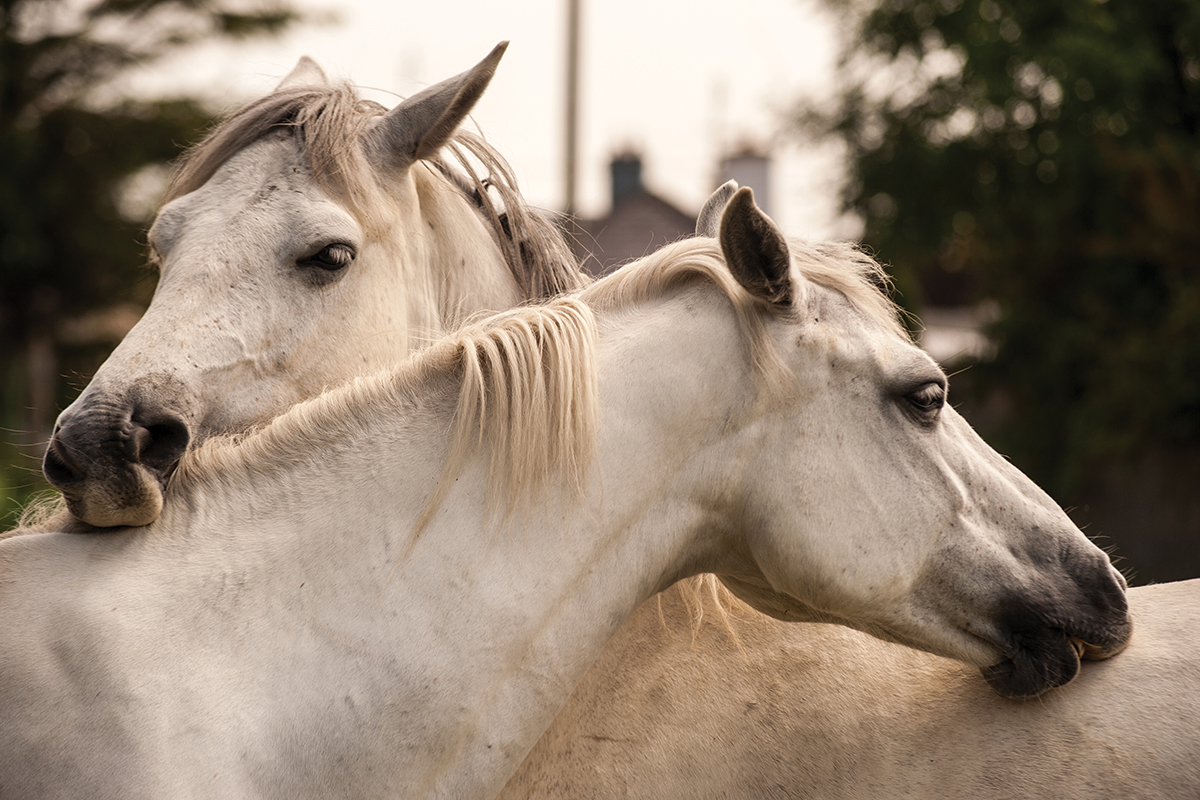
“Once you find the magic spot, try to spend a little time there, and let them know that grooming can feel good,” she says. “I’ll often try to finish with the spot they really like. I’ll wait until the end of my grooming session, and I’ll spend a little extra time grooming there.”
Biehunko is a big fan of hanging out in the pasture with her horses and getting to know what they like.
“I do a lot of that, and I’ve done that with all the foals I’ve raised. It’s just touching in different places and sort of asking, watching their body language: ‘Do you like being scratched here, do you like being scratched harder, do you like being scratched softer; oh, you don’t like being touched there, OK that’s the area we need to work on.’ So just play! Play with your horse.”
Listening to the Horse
Learning to recognize and respond to a horse’s more subtle body language around grooming can help prevent increasing issues with a horse that hates grooming. Once he realizes that you are listening to him and honoring that body language, he doesn’t have to shout because you’re listening to his whispers, says Biehunko.
“The horses that are biting, if we can teach them ‘I’m listening to you at a lower level,’ maybe they don’t feel like they need to get so snappy,” she says. A harsh response to negative behavior is counterproductive.
“Punishing a horse for saying, ‘Ouch, that hurts,’ often escalates the behavior because they are, in their language, trying to say to you they don’t like that, and if you punish that behavior, then the next time they’ll say it a little louder and a little ruder,” says Hill.
Both experts agree that if a horse is exhibiting dangerous behavior, you should definitely not push the issue, and find a professional to help.
“Think of grooming as important as the ride when it comes to a training issue,” urges Hill.
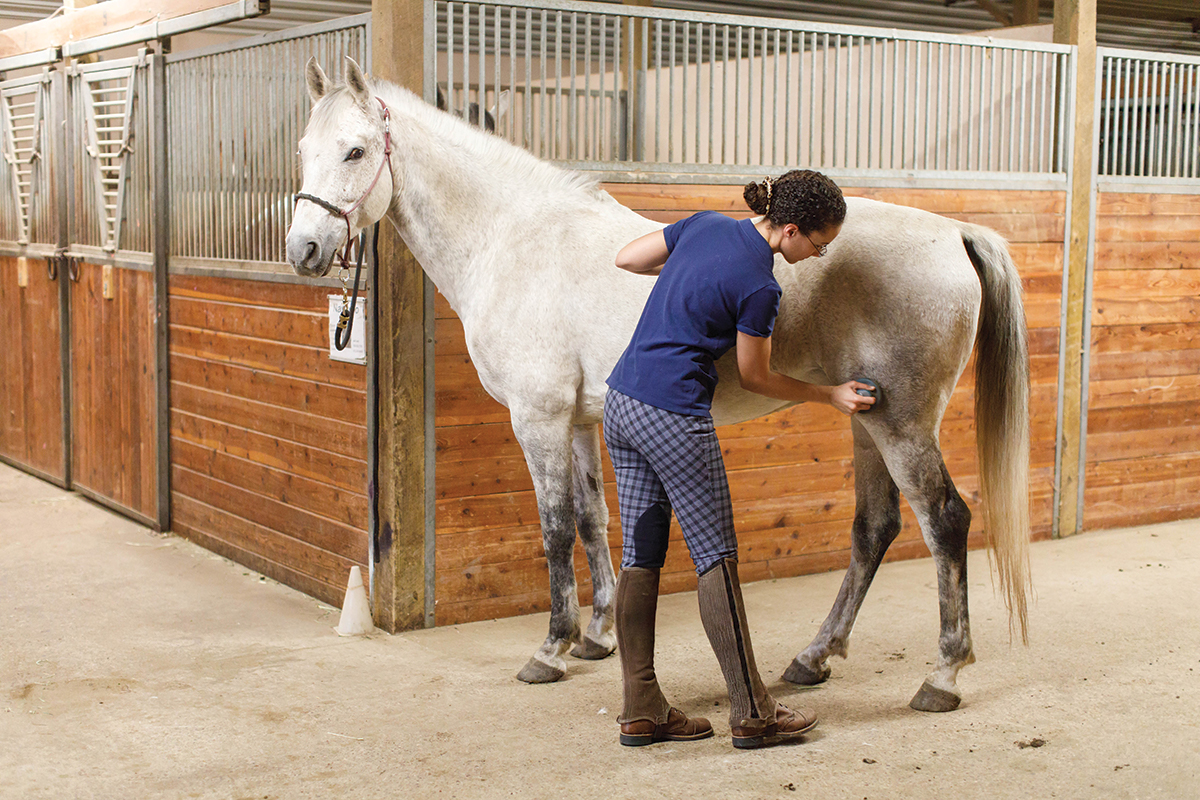
Not every horse will love being groomed, and that’s OK. You can still find a way to get the job done safely while lowering the stress level for both of you.
“If you’ve got a horse that really doesn’t enjoy the process, you can do a minimal, but effective, groom as often as possible so that you’re not constantly pushing him, doing the job that’s necessary for hygiene and maintenance, but not going overboard,” says Hill. “The relationship works two ways. Maybe you’re someone who really loves to groom and pet and snuggle with a horse, but if you have a horse [that’s not into it], respect that and let them be who they are.”
About the ExpertsCat Hill grew up in upstate New York on a working farm. Her earliest memory is of the day her parents got her a pony for her birthday. She grew up loving horses and has worked as a professional groom in many corners of the horse world, including hunters, jumpers, dressage and eventing. She and Emma Ford wrote the best-selling book World Class Grooming for Horses and run a business together teaching people to elevate the level of care and understanding for their horses. Jenny Beard Biehunko, DVM, Resident ACVB, is a 1998 graduate of the University of Georgia College of Veterinary Medicine. She has been practicing behavioral medicine in a prxivate practice setting for over 20 years. In 2016, she began a residency with the American College of Veterinary Behaviorists, working toward a specialty in veterinary behavior. Biehunko lectures on ethology and behavioral medicine at Tuskegee and Auburn Colleges of Veterinary Medicine. She has a special interest in equine behavior, as well as in integrating lower stress and humane handling methods into the veterinary and training communities. |
This article with tips for when a horse hates grooming appeared in the May 2021 issue of Horse Illustrated magazine. Click here to subscribe!




